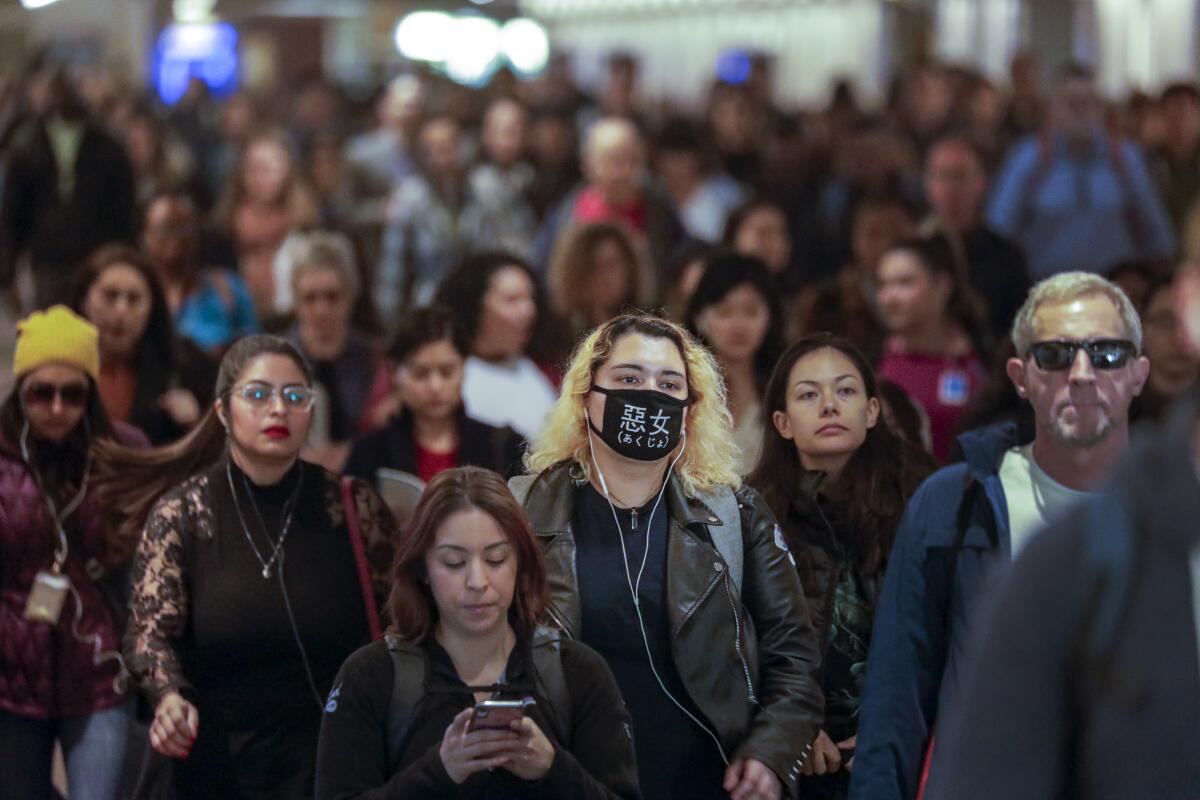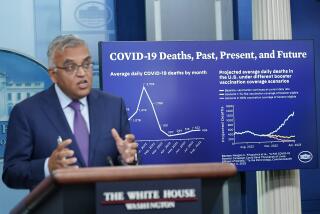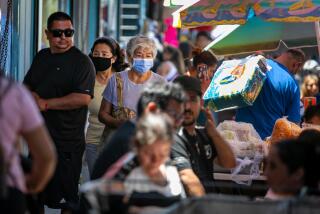Coronavirus memes fill social media feeds. Here’s why it’s making young people so anxious

The news of a novel coronavirus spreading across the world has become inescapable, including announcements of canceled flights to China, massive quarantines and updates on the disease’s death toll and the hunt for its origin.
Federal officials say the risk of catching the virus in the United States remains low, but fear has been growing rapidly regardless, particularly among younger Americans.
This is probably the first time that a younger generation has heard talk of a worldwide pandemic — as was discussed with outbreaks of SARS and the H1N1 flu in the 2000s — and therefore is particularly sensitive to it, experts say.
But even more so, experts say the constant exposure to information about coronavirus on social media platforms and elsewhere on the internet is probably causing anxiety because of the sheer volume of information being shared, some of which is not even true.
Frequent updates and references to coronavirus on news sites as well as Twitter and Instagram can make the virus feel more threatening than it is, especially in an online ecosystem that tends to favor doomsday predictions over those that are more measured.
Even the proliferation of coronavirus memes and jokes can serve as another reminder of what feels like a lurking threat, said UC Riverside epidemiologist Brandon Brown.
“We spend a lot of time learning on the screen, and if we keep seeing ‘coronavirus, coronavirus, coronavirus,’ each time we’re going to pay attention to that,” Brown said. “There seems to be a lot of hysteria right now.”
The current outbreak presents a challenge for public health officials trying to communicate across generational lines. Trusted agencies with high levels of expertise such as the World Health Organization and the U.S. Centers for Disease Control and Prevention aren’t the places to which young people typically turn for information.
In Southern California, high school and university students have launched campaigns for classes to be canceled until the outbreak subsides. False reports of infected students have circulated on campuses, while panic has prompted not just the widespread use of face masks but also xenophobia and anti-Chinese sentiment among students.
A petition to cancel classes in the Alhambra Unified School District had garnered more than 14,000 signatures as of Wednesday. Even if some kids were just trying to get out of school, many have been going to school in masks for several days, said district spokeswoman Toby Gilbert.
School staff have been emphasizing that there is no reason to panic. Later this week, nurses will give presentations in each classroom to discuss how to prevent infections and try to quell fears about the virus.
“The coronavirus is hijacking our educational schedules,” Gilbert said. “It’s very hard to compete with dramatic end-of-the-world, ‘we’re all going to die, we’ve got to cancel school, we’ve got to bury ourselves underground’ posts…. We’re struggling with how to keep people calm.”
Los Angeles County officials began fielding questions from school districts countywide last week about students wearing masks and taking other coronavirus precautions, said Susan Chaides, project director of Community Health and Safe Schools at the L.A. County Office of Education.
Though the new strain of coronavirus has infected more than 27,000 people worldwide and killed at least 560, there have been fewer than a dozen cases in the United States. In California, only six cases have been confirmed, all of them people who had recently traveled to China or had close contact with someone who did.
The single case in L.A. County was a traveler returning from China. Officials are not recommending that anyone wear masks to protect against the virus, but some L.A. students still are, Chaides said.
“Fear is very high,” Chaides said.
Mckayla Fontanez, 20, purchased hand sanitizer and began wearing face masks in crowded places after she learned about the coronavirus. On the L.A. subway, she now pays attention to what she touches, such as the handrail on the escalator and the pole on the train car, she said.
Yet she still doesn’t feel totally safe from infection, she said. She has followed a flurry of updates online as coronavirus cases increase and pop up in new countries.
“I’m still kind of unsettled even though I do have my own precautions,” said Fontanez, who lives in North Hollywood.
Young people are particularly susceptible to anxiety because of the number of channels through which they receive information about the coronavirus, sorting through TikTok and Instagram videos, updates from their friends and families as well as news headlines, said Diane Francis, an associate professor of health communication at the University of Kentucky.
“It’s the sheer amount of information coming across at one time, and the complexity of the information as well,” she said. “It’s difficult for them to decipher what is real and what is fake, and because of that, that induces anxiety and fears and worries.”
The internet tends to favor exaggerations or worst-case scenarios. Coronavirus jokes, intended to make light of the outbreak, often have a dark undertone. The bio for Instagram account @coronavirusplague, which exclusively shares memes about the virus, reads: “ Just trying to make y’all laugh before we die.”
Smartphones have given adolescents more information than ever before and made them aware of the latest disease outbreak, something that was probably not true a decade ago, Francis said. But scrolling through headlines or tweets doesn’t provide necessary context, she said: that the risk of Americans catching the coronavirus remains low.
“A lot more people are going to know the name ‘coronavirus,’ primarily because of the spread of the name through hashtags, through tweets, through the memes,” Francis said. “But what exactly is it? How does it spread? ... Young people in particular are less likely to have that information than just know the name.”
Alena Garcia, 21, peered over her black face mask at her phone as she was waiting for a train in a downtown L.A. Metro station on a recent weekday. She first read about coronavirus online last week, she said.
“Better be safe than sorry,” said Garcia, who lives in Sylmar.
People’s imaginations tend to fill in uncertainty with worst-case scenarios, creating a challenge for scientists and public health officials trying to communicate about an emerging epidemic, experts say.
“The public wants to have this nice narrative, they want to understand everything in one story, they want it to be nicely packaged — and unfortunately that’s not the reality we live in,” said USC medical education lecturer Sarah Mojarad.
The ability for anyone to share things on the internet has removed the gatekeepers who used to vet information before it was widely disseminated, allowing others without expertise to fill in those gaps with conspiracy theories or other false information, she said.
Francis with the University of Kentucky said the coronavirus outbreak could provide a learning opportunity for public health officials trying to bridge a cultural gap with young people.
She said officials could try sharing a meme showing that the new coronavirus is less dangerous than the flu in the United States. Though it’s possible, she said, that it would be drowned out by the high volume of posts exaggerating coronavirus’ danger.
“We know how [young people] access information, but we’re still trying to understand what works in terms of communicating to them in terms of risks of certain health issues,” she said.
Ellie Mitchell, 22, first learned about the new coronavirus after she saw it referenced in a meme. She quickly figured out that the flu is far more dangerous in the U.S., she said.
A pharmacy technician in San Francisco, Mitchell already washes her hands between interacting with almost every customer who comes into the drug store where she works.
In the last couple of weeks, she started disinfecting her phone and wallet with rubbing alcohol when she got home from work. But it isn’t necessarily because of the coronavirus, she said — the outbreak just got her thinking about how to prevent infections generally.
“These items are carriers of germs — I’d rather take two seconds to do that than be sick for two weeks,” she said.
More to Read
Start your day right
Sign up for Essential California for news, features and recommendations from the L.A. Times and beyond in your inbox six days a week.
You may occasionally receive promotional content from the Los Angeles Times.







